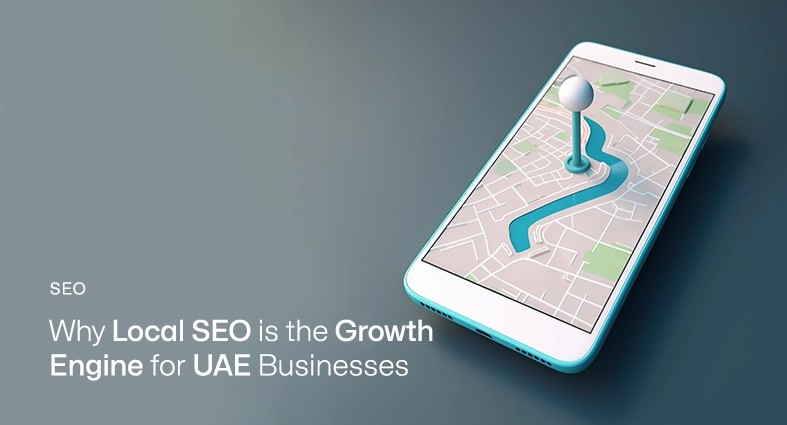Achieving success in the online realm requires more than just driving traffic to your website. It’s equally important to convert those visitors into customers or subscribers. Conversion Rate Optimization (CRO) is a critical aspect of achieving online success for e-commerce businesses. It involves implementing strategies to increase the percentage of website visitors who take desired actions, such as making a purchase or subscribing to a newsletter. By optimizing various elements of the user experience, content, design, and checkout process, businesses can improve conversion rates and drive better results.
The importance of CRO lies in its ability to enhance the user experience, increase customer engagement, and drive conversions. Rather than solely focusing on attracting more traffic to a website, CRO aims to make the most out of existing visitors by guiding them through the conversion funnel and encouraging them to take the desired actions. To drive online success through CRO, businesses need to implement a range of key strategies. These strategies encompass optimizing various aspects of the website, including user experience, design, content, and call-to-action (CTA) elements. By following these strategies, businesses can effectively engage their audience, build trust, and ultimately increase conversions. In this article, we will delve into the essential strategies for conversion rate optimization to empower e-commerce businesses to drive remarkable results. Let’s explore these strategies in detail.
A/B Testing
A/B testing is a powerful method used in conversion rate optimization to compare two different versions of a webpage, element, or design to determine which one performs better in terms of conversion rates. It involves presenting two variations, A and B, to separate groups of visitors and analyzing the data to identify which version drives higher conversions. A/B testing allows you to make data-driven decisions and continuously optimize your website for better results. A/B testing is based on the principle of experimentation. It allows you to test different variations of elements on your website and measure their impact on user behavior and conversion rates. By comparing two versions simultaneously, you can isolate the effect of specific changes and determine which version leads to better performance. This data-driven approach helps you identify the most effective elements and make informed decisions to optimize your website for higher conversions.
Conducting A/B tests to optimize conversion rates
To conduct an A/B test, you need to define a clear objective and choose the elements you want to test. It could be a headline, call-to-action (CTA) button, layout, color scheme, or any other element that directly impacts user engagement and conversion rates. The two versions, A and B, should differ only in the element you are testing, while other factors remain consistent. A random sample of website visitors is then split into two groups, with each group exposed to either version A or B. The results are measured and compared to determine which version performs better in terms of conversions.
Key elements to test for better results
When conducting A/B tests, it’s essential to focus on elements that have a significant impact on user behavior and conversions. Some key elements to consider for testing include:
- Headlines and copy: Test different headlines, taglines, or product descriptions to assess which version resonates better with your target audience and encourages them to take action.
- Call-to-action (CTA) buttons: Experiment with different colors, sizes, placements, and wording of your CTAs to identify the most compelling and persuasive options.
- Layout and design: Test variations in the overall layout, visual elements, and design aesthetics to understand how different arrangements affect user engagement and conversions.
- Forms and fields: Optimize your forms by testing the number of fields, their order, and the level of the required information to find the optimal balance between collecting necessary data and reducing friction.
Analyzing and implementing insights from A/B testing
Analyzing the results of A/B tests is crucial for gaining insights and implementing changes that drive better conversion rates. Statistical significance is determined to ensure that the observed differences are not due to random chance. Once you have statistically significant results, you can analyze the data to understand the impact of the tested element on conversions. Based on the insights gathered, you can implement the winning variation as the default version on your website and further iterate on other elements to continue optimizing your conversions.
Landing Page Optimization
Landing page optimization is a critical component of conversion rate optimization (CRO). A landing page is a standalone web page designed with a specific purpose, such as driving sales, capturing leads, or promoting a specific offer. The goal is to guide visitors towards taking a desired action and converting them into customers or leads. Optimizing your landing pages can significantly improve their effectiveness in driving conversions and maximizing your online success. Landing page optimization is essential because it directly impacts your conversion rates. A well-optimized landing page can engage visitors, communicate the value of your offering, and encourage them to take action. By focusing on improving the user experience and removing any barriers to conversion, you can increase the likelihood of visitors completing the desired action and achieving your conversion goals.
Designing visually appealing and user-friendly landing pages
The visual appeal and user-friendliness of your landing pages are crucial factors in capturing and retaining visitor attention. A visually appealing design with cohesive branding elements can create a positive first impression and build trust. Additionally, a user-friendly layout and navigation ensure that visitors can easily find the information they need and navigate through the page smoothly.
Crafting persuasive and compelling headlines and copy
The headlines and copy on your landing pages play a pivotal role in capturing visitors’ interest and persuading them to take action. Crafting compelling headlines that immediately communicate the value proposition and benefits of your offering can captivate visitors and entice them to continue reading. The copy should be persuasive, highlighting the unique selling points and addressing any potential objections. It should also be concise, engaging, and focused on driving conversions.
Optimizing forms and reducing friction for higher conversions
Forms are often an essential element on landing pages, especially for lead generation or e-commerce purposes. Optimizing forms involves reducing friction and eliminating any unnecessary fields or steps that may deter visitors from completing the form. Using smart form design techniques such as progressive profiling, where you collect information gradually over multiple interactions, can help increase form completion rates. Additionally, providing clear instructions, using appropriate validation, and ensuring a seamless mobile experience is crucial for reducing friction and improving conversions.
Call-to-Action (CTA) Optimization
Effective CTAs play a crucial role in driving conversions on your website. A call-to-action is a prompt or directive that encourages visitors to take a specific action, such as making a purchase, signing up for a newsletter, or requesting more information. CTAs serve as guideposts that direct users toward the desired goal, increasing the likelihood of conversion. Optimizing your CTAs involves designing attention-grabbing and persuasive buttons or links that prompt users to take the desired action. Factors such as color, placement, wording, and size can significantly impact the effectiveness of your CTAs. By testing different variations and analyzing the performance, you can optimize your CTAs to increase click-through rates and conversions.
Designing attention-grabbing and persuasive CTAs
Designing attention-grabbing and persuasive CTAs is essential to capture the user’s attention and motivate them to take action. Several factors contribute to creating compelling CTAs:
- Clear and concise wording: Use concise and action-oriented language that communicates what users should do. Phrases like “Buy Now,” “Sign Up,” or “Get Started” are straightforward and effective.
- Compelling visuals: Incorporate eye-catching design elements such as color contrast, bold typography, and visually appealing buttons to make your CTAs stand out.
- Engaging copy: Craft persuasive copy that highlights the value proposition or benefits users will gain by taking the desired action. Emphasize the unique selling points of your product or service to create a sense of urgency and excitement.
- Personalization: Tailor your CTAs to specific user segments or stages of the customer journey. By addressing their specific needs or pain points, you can increase the relevance and effectiveness of your CTAs.
Placing CTAs strategically for maximum impact
The placement of CTAs within your website or landing pages is crucial for maximizing their impact. Consider the following placement strategies:
- Above the fold: Position your CTAs prominently within the visible area of the webpage, ensuring that users don’t have to scroll down to see them. This placement increases the visibility and accessibility of your CTAs.
- Within content: Place CTAs strategically within the content of your web pages, blog posts, or product descriptions. Relevant CTAs that align with the content can capture the user’s attention when they are most engaged.
- Exit-intent pop-ups: Utilize exit-intent pop-ups to display CTAs when users are about to leave your website. These pop-ups can offer last-minute incentives or provide additional information to encourage users to reconsider their decision.
- Throughout the user journey: Incorporate CTAs at different stages of the user journey. For example, include a CTA to sign up for a newsletter on a blog post and a CTA to purchase on a product page. This approach ensures that users encounter relevant CTAs at different touchpoints, increasing the chances of conversion.
Testing and optimizing CTAs for better performance
Testing and optimizing CTAs is an ongoing process to improve their performance and increase conversions. A/B testing allows you to compare different variations of your CTAs to determine which one drives better results. Here are some elements to consider when testing and optimizing CTAs:
- Button design and color: Test different button designs, sizes, shapes, and colors to see which combination generates the highest click-through rates. Colors that contrast with the surrounding element can make CTAs more noticeable.
- Placement and visibility: Experiment with different placements and visibility options for your CTAs. Test placing CTAs above the fold, within the content, or at the end of a page to determine the most effective positioning.
- Copy and language: Try variations in your CTA copy and language to assess their impact on conversion rates. Experiment with different wording, tones, and calls to action to find the most persuasive and engaging options.
- Timing and triggers: Test different timing and trigger mechanisms for displaying CTAs. Consider using exit-intent pop-ups, scroll-triggered CTA Optimization, or timed pop-ups to engage users at the right moment.
- Mobile responsiveness: Ensure that your CTAs are optimized for mobile devices. Test how they appear and function on different screen sizes and devices to provide a seamless experience for mobile users.
- Analytics and data analysis: Use analytics tools to track and measure the performance of your CTAs. Analyze user behavior and conversion paths to gain insights into how CTAs are influencing user actions.
- Iterative optimization: Continuously iterate and refine your CTAs based on the insights and data gathered from testing. Implement changes based on the results obtained and monitor the impact on conversion rates. Small tweaks and adjustments can lead to significant improvements in performance over time.
User Experience (UX)
User experience (UX) plays a crucial role in determining the success of your website’s conversion rates. It encompasses the overall experience that users have while interacting with your website, including their ease of navigation, engagement, and satisfaction. By focusing on enhancing the UX, you can create a positive and seamless journey for your visitors, ultimately leading to higher conversion rates. The user experience directly impacts conversion rates. When visitors have a positive experience on your website, they are more likely to engage with your content, trust your brand, and ultimately convert. A well-designed and user-friendly website can build credibility, instill confidence, and encourage users to take the desired actions, whether it’s making a purchase, filling out a form, or subscribing to a newsletter. Understanding the correlation between UX and conversion rates is vital for implementing effective strategies.
Optimizing website navigation and structure
One of the key aspects of UX optimization is improving website navigation and structure. Visitors should be able to easily find what they’re looking for and navigate through your website without confusion or frustration. Streamlining the menu structure, organizing content in a logical hierarchy, and incorporating intuitive search functionality can enhance navigation. Clear and well-labeled navigation menus, breadcrumbs, and internal linking also contribute to a seamless browsing experience, enabling users to find relevant information and products effortlessly.
Improving website speed and performance
Website speed and performance have a significant impact on user experience and conversion rates. Slow-loading websites frustrate users and increase the likelihood of bounce rates. Optimizing website speed involves compressing images, minifying code, utilizing caching mechanisms, and leveraging content delivery networks (CDNs). By ensuring fast and responsive page load times, you can improve user satisfaction, engagement, and conversion rates.
Enhancing mobile responsiveness and usability
In today’s mobile-dominated era, optimizing your website for mobile devices is crucial. Mobile responsiveness refers to designing and developing your website to adapt and provide an optimal experience across various screen sizes and devices. With a growing number of users accessing websites on smartphones and tablets, it’s essential to ensure that your website is fully responsive, with intuitive touch controls and optimized content layout. Providing a seamless and user-friendly experience on mobile devices enhances engagement and encourages mobile users to convert.
Conversion Funnel Optimization
The conversion funnel is a visual representation of the path that website visitors take from their initial interaction to the final conversion, such as making a purchase or filling out a form. The conversion funnel represents the journey that visitors go through from the initial interaction to the final conversion. Optimizing the conversion funnel involves analyzing each stage of the funnel, identifying potential drop-off points, and implementing strategies to address specific barriers. By optimizing the flow and reducing friction at each stage, you can guide visitors smoothly toward the desired action.
Mapping and analyzing the conversion funnel
The first step in optimizing the conversion funnel is to map and analyze its different stages. This involves understanding the various touchpoints and actions that users go through during their journey on your website. By visualizing the funnel, you can identify the entry points, the key steps, and the ultimate conversion goal. Mapping the funnel allows you to gain insights into user behavior, track their progress, and identify areas for improvement.
Identifying potential drop-off points and barriers to conversion
Once the conversion funnel is mapped, it’s crucial to identify potential drop-off points and barriers that hinder users from progressing toward the desired action. This could include high bounce rates, abandoned carts, or incomplete form submissions. By analyzing user behavior and conducting user research, you can pinpoint the specific areas where users are more likely to abandon the conversion process. These drop-off points could be attributed to issues such as complex navigation, lack of trust, unclear instructions, or excessive form fields.
Implementing strategies to address specific stages of the funnel
To optimize the conversion funnel, it’s important to implement targeted strategies for each stage of the funnel. This could involve improving the website’s navigation and user interface to provide a seamless and intuitive experience. It could also include optimizing product pages or landing pages to enhance their persuasiveness and highlight the value proposition. Strategies could also focus on simplifying the checkout process, reducing form fields, and offering multiple payment options. By addressing the specific pain points and optimizing each stage, you can increase the likelihood of users progressing through the funnel and completing the desired action.
Streamlining the conversion process for better results
Streamlining the conversion process involves making it as frictionless and efficient as possible. This can be achieved by removing unnecessary steps, reducing distractions, and simplifying the user journey. For example, offering guest checkout options, pre-filling form fields, or providing progress indicators can streamline the process and make it easier for users to convert. Additionally, optimizing the website for mobile devices and ensuring fast loading times contribute to a smooth and seamless user experience, further improving the conversion rate.
CRO Tools
To effectively optimize your conversion rates, you need the right set of tools and technologies at your disposal. When it comes to CRO, having a comprehensive toolkit can significantly improve your ability to understand user behavior, conduct experiments, and track conversion metrics. Heatmap and user recording tools provide insights into user behavior and interaction on your website. A/B testing platforms allow you to create and analyze experiments to determine the most effective variations. Analytics tools help track and measure conversion metrics to assess the impact of your optimization strategies. These tools can provide valuable insights, facilitate experimentation, and help track and measure conversion metrics.
Heatmaps and User Recordings for Understanding User Behavior
Heatmap and user recording tools are instrumental in gaining insights into how users interact with your website. Heatmaps provide visual representations of where users click, scroll, and spend the most time on a webpage. This information helps identify patterns, understand user behavior, and uncover areas of improvement. User recording tools allow you to watch recordings of user sessions, providing a firsthand view of how users navigate through your site and interact with different elements. By analyzing heatmaps and user recordings, you can identify pain points, optimize page layouts, and improve user experience.
A/B Testing Platforms for Experimentation and Analysis
A/B testing platforms are essential for conducting controlled experiments to compare different versions of your website or specific elements to determine which one performs better in terms of conversions. These platforms allow you to create variations of your web pages and divide your traffic to test them simultaneously. By analyzing the results, you can identify the most effective elements and make data-driven decisions to optimize your website for higher conversion rates. A/B testing platforms provide statistical analysis, confidence levels, and conversion metrics to help you measure the impact of changes accurately.
Analytics Tools for Tracking and Measuring Conversion Metrics
Analytics tools are crucial for tracking and measuring key conversion metrics, providing insights into the effectiveness of your optimization efforts. Tools like Google Analytics offer valuable data on conversion rates, bounce rates, average session duration, and other important metrics. By setting up conversion goals and tracking events, you can gain a deeper understanding of user behavior and identify areas for improvement. Analytics tools also provide valuable insights into traffic sources, user demographics, and user flow, helping you identify opportunities to optimize specific segments and enhance overall conversion rates.
CRO Metrics
To effectively measure and track the success of your conversion rate optimization (CRO) efforts, it’s important to focus on key metrics that provide insights into the performance of your website and the impact of your optimization strategies. Tracking and measuring key metrics is essential to assess the success of your CRO efforts. Conversion rate, bounce rate, average session duration, revenue per visitor (RPV), and return on ad spend (ROAS) are some of the important metrics to monitor. Setting benchmarks and goals for these metrics helps you track progress and make data-driven decisions to further optimize your conversions. By monitoring these metrics, you can identify areas for improvement, make data-driven decisions, and set benchmarks and goals to drive continuous growth.
Key metrics to track and measure CRO success
When it comes to CRO, several metrics are crucial for assessing the effectiveness of your strategies. Here are some key metrics to track and measure:
- Conversion Rate: The conversion rate is the percentage of website visitors who take the desired action, such as making a purchase, filling out a form, or subscribing to a newsletter. It is calculated by dividing the number of conversions by the total number of visitors and multiplying it by 100. A higher conversion rate indicates successful optimization efforts.
- Bounce Rate: Bounce rate refers to the percentage of visitors who navigate away from your website after viewing only one page. A high bounce rate may indicate that visitors are not finding what they are looking for or that your website needs improvement. Reducing the bounce rate is essential for keeping visitors engaged and increasing the likelihood of conversions.
- Average Session Duration: This metric measures the average amount of time visitors spend on your website during a session. A longer average session duration suggests that visitors are actively engaging with your content and exploring different pages. It indicates a positive user experience and can lead to higher conversions.
Revenue per visitor (RPV) and return on ad spend (ROAS)
While conversion rate, bounce rate, and average session duration provide insights into website performance, metrics related to revenue and return on investment are crucial for assessing the financial impact of your CRO efforts.
- Revenue per Visitor (RPV): RPV calculates the average revenue generated per visitor to your website. It is calculated by dividing the total revenue by the total number of visitors. Monitoring RPV helps determine the effectiveness of your optimization strategies in driving revenue growth. Increasing RPV indicates that visitors are not only converting but also spending more on your products or services.
- Return on Ad Spend (ROAS): If you are running paid advertising campaigns to drive traffic and conversions, ROAS measures the return on your advertising investment. It is calculated by dividing the revenue generated from ads by the cost of the ads. A higher ROAS indicates that your advertising efforts are generating positive returns, making it an essential metric for evaluating the effectiveness of your ad campaigns and optimizing your ad spend.
Setting benchmarks and goals for CRO metrics
To effectively measure the success of your CRO efforts, it’s important to set benchmarks and goals for the metrics mentioned above. Benchmarks provide a reference point to compare your performance against industry standards or competitors, while goals help guide your optimization strategies and monitor progress over time. When setting benchmarks, research industry averages and analyze competitor data to understand what is considered a good performance in your specific market. This will help you determine where your website currently stands and identify areas for improvement. Goals should be specific, measurable, attainable, relevant, and time-bound (SMART). For example, you might set a goal to increase your conversion rate by 10% within three months or reduce your bounce rate by 20% within six months. By setting clear goals, you can align your optimization strategies and track your progress toward achieving them.
CRO Trends
In the fast-paced world of digital marketing, staying ahead of the latest trends is crucial to maintain a competitive edge in conversion rate optimization (CRO). Personalization and targeted messaging allow you to deliver tailored experiences to different user segments, increasing the likelihood of conversions. Voice search optimization is becoming increasingly important as voice assistants gain popularity. Leveraging artificial intelligence and machine learning can provide valuable insights and automate certain CRO processes. Keeping up with the latest trends in CRO can give you a competitive edge and drive better results.
Exploring emerging trends in conversion rate optimization
As technology continues to advance and consumer behavior evolves, new trends are constantly emerging in the field of CRO. These trends are driven by changes in user expectations, advancements in technology, and shifts in the digital landscape. By staying informed about these emerging trends, businesses can proactively implement strategies that align with the evolving needs of their target audience.
Personalization and targeted messaging for improved conversions
Personalization has become a key driver of conversions in recent years. Today’s consumers expect tailored experiences that cater to their specific needs and preferences. By leveraging data and insights about individual users, businesses can deliver personalized content, recommendations, and offers that resonate with their target audience. This level of personalization enhances the user experience, builds trust, and increases the likelihood of conversions.
Voice search optimization and conversational user interfaces
With the rise of voice assistants and smart speakers, voice search optimization has become increasingly important in CRO. Users are now using voice commands to search for products, make inquiries, and perform various online tasks. Optimizing websites and content for voice search involves understanding natural language queries and conversational search patterns. Businesses can benefit from optimizing their content to be voice-friendly and providing conversational user interfaces that engage and assist users more interactively and intuitively.
Leveraging artificial intelligence and machine learning for CRO
Artificial intelligence (AI) and machine learning (ML) technologies have transformed the field of CRO. These technologies enable businesses to analyze large volumes of data, identify patterns, and make data-driven decisions to optimize conversions. AI-powered algorithms can predict user behavior, personalize experiences, and automate certain CRO processes. Machine learning algorithms can continuously learn and adapt, helping businesses refine their strategies based on real-time data. By leveraging AI and ML, businesses can gain valuable insights, streamline their optimization efforts, and achieve better conversion results.
Conclusion
Driving results through conversion rate optimization is essential for online success. By implementing the right strategies and techniques, you can unlock the full potential of your website and maximize conversions. A/B testing allows you to make data-driven decisions and optimize various elements of your website. Landing page optimization ensures that you create engaging and persuasive pages that drive conversions. Call-to-action (CTA) optimization helps prompt users to take the desired action, increasing click-through rates and conversions. User experience (UX) optimization enhances the overall website experience, reducing bounce rates and improving conversion rates. Conversion funnel optimization ensures a smooth and frictionless journey for visitors, guiding them toward the desired action. Utilizing CRO tools, tracking relevant metrics, and staying updated with CRO trends further enhances your optimization efforts. Contact Pentagon today to learn more about our digital marketing services and how we can empower your online store to reach new heights of success. Together, we can drive conversions, increase revenue, and create a powerful online presence that sets you apart from the competition.
services
Feel free to send us a message.
Please, share your thoughts, and let's chat over a cup of tea.


















